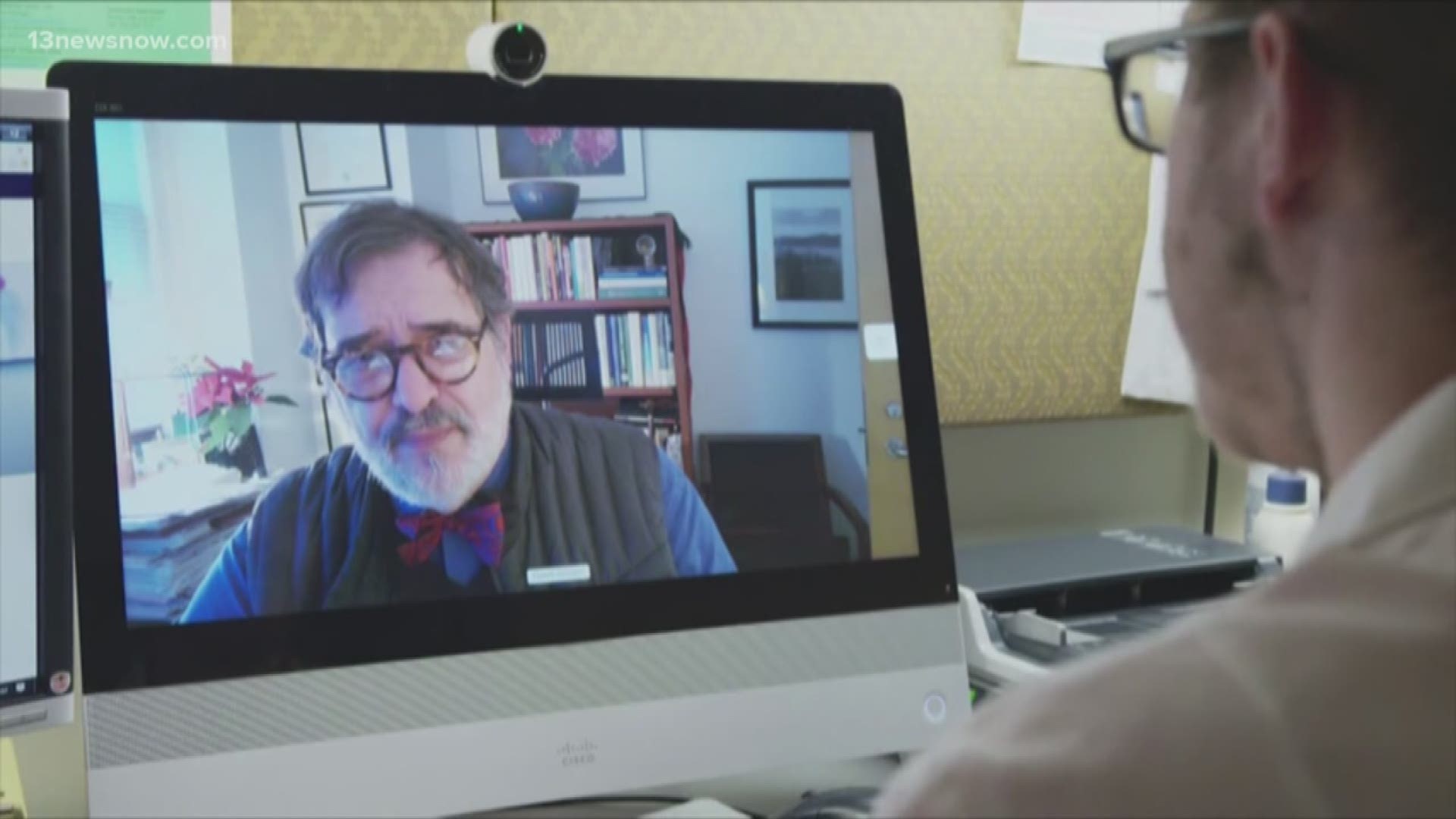NORFOLK, Va. — The importance of social distancing during this pandemic is changing the way many people keep up with their healthcare providers.
With the click of a button, many doctors across the United States and Hampton Roads are keeping up with appointments, virtually.
Healthcare providers are turning to telemedicine to make that happen.
“There are hospitals in our town right now that have gone from around 20 providers to hundreds of providers in 48 hours,” said Pediatric Nurse Dr. Tina Gustin.
Gustin, along with Old Dominion University nursing professor Carolyn Rutledge, have long worked with telehealth at the school. They are helping providers and educational institutions make the switch to telemedicine.
“It’s been around a long, long time,” said Rutledge. “It just hasn’t been recognized like it has with COVID-19.”
Gustin said providers are using Facetime, Skype, Zoom and even text messaging. She said smartphones can provide a clear picture for doctors and eliminate office visits.
“The patient can shine a light in their mouth while they are taking an iPad closer to their throat,” Gustin said. “You can get a really good view of the back of the throat and the tonsils.”
If the doctor detects strep for example, they could have the patient drive by for curbside care. The doctor comes out, swabs and tests the patient without them ever stepping foot into the office.
She said they can teach patients to count heart rate and more.
“Teach them how to feel the lymph nodes so they can tell you where it is sore,” Gustin said.
Personal Protective Equipment shortages are increasing across the U.S. Gustin said the technology can decrease the number of nurses or doctors putting on the masks, gowns, and gloves.
“You can put one provider in that equipment and send them into a room of an infected patient,” Gustin said. “They can then visit virtually back out to all of the specialists that need to evaluate that patient.”
She said it’s not the answer to all medicine.
“Some of the screening can be done by a telehealth, which then tells you, you need to go to the emergency room or you need to come in,” Gustin said.
Hospitals are restricting visitors and even new mothers with babies in the NICU. Gustin said telemedicine can allow the mother to check in with her baby and the doctors inside.
Rutledge said it also helps connect students who can’t be in hospitals right now.
“Students can finish the requirements for clinical by working through telehealth,” Rutledge said.
The regulations for telemedicine are constantly changing. Gustin said that’s been the biggest challenge with connecting providers virtually, right now.
But she said the practice is working, and people will wonder why things haven’t always been done this way.
“Patients are satisfied and the providers that use it are satisfied,” Gustin said. “The outcomes are as good as an inpatient visit.”
Both professors agree the use of telemedicine will continue growing strong long after the pandemic.

